Workers prioritize working and earning their wages over reskilling themselves, the time investment does not result in job security or advancement
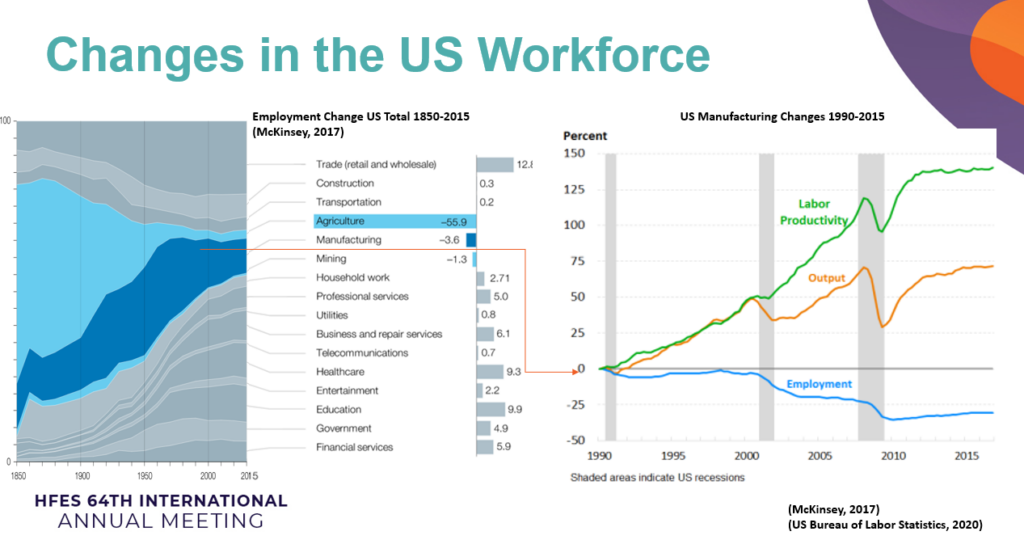
Shivam Zaveri – Panelist at Human Factors and Ergonomics Society 64th Conference – with ASU, Uber, Rand Corp, US Army
Enhancing Workforce Outcomes with AI-Based Training Systems
By Shivam Zaveri
Surveyed Worker Roles and Technologies •
Prerequisites for a Training System •
AI Training System Objectives
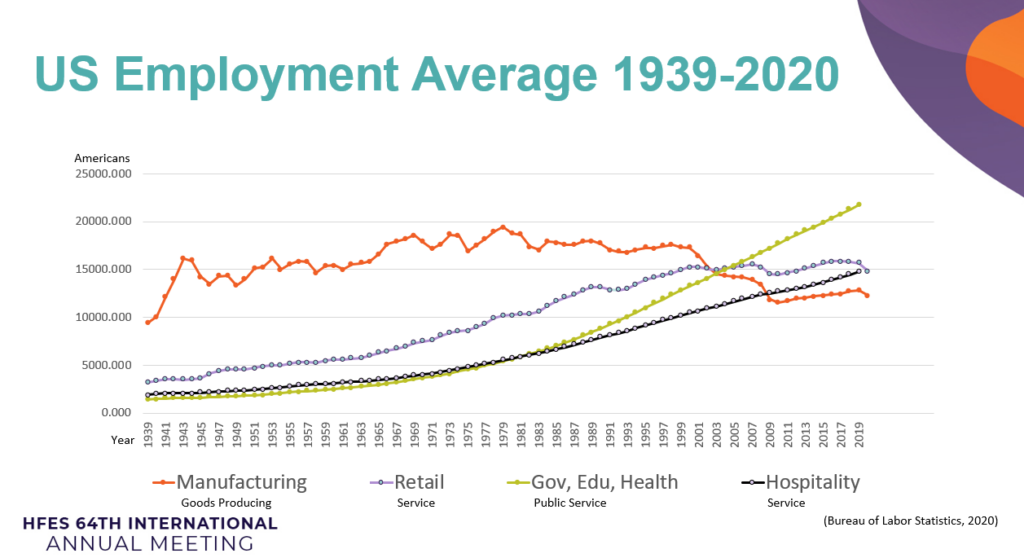
Here, I charted major sectors of the US workforce. Showing 60 million people of the 160 employed in the US.
Good producing, Service producing, and public service industries are represented.
While the trends for public service employment has continued to increase at faster rates,
Services sectors have been relatively stagnant
Goods producing industries has had a sharp decline (Manufacturing, Mining, Construction, Agriculture)
With advances in automation and global competition, the manufacturing industry have been able to reduce the amount of workers by over 30% since 1979. There were 19 million workers in 1979 to 11 million in 2020.

(McKinsey, 2017)
Change in workforce
US Job Loss Over 10 Year Span
source: tradingeconomics.com
Manufacturing has seen a stark rise in labor output and productivity with a reduction in employment. Blue collared roles are increasingly at risk.
The decrease in employment is attributed to facilities implementing automation and advanced technologies, globalizing competitors, and out sourcing departments.
Automation has primarily targeted repetitive and redundant tasks found in a worker’s role. Organizations implement these technologies to remain competitive and a globalizing landscape.
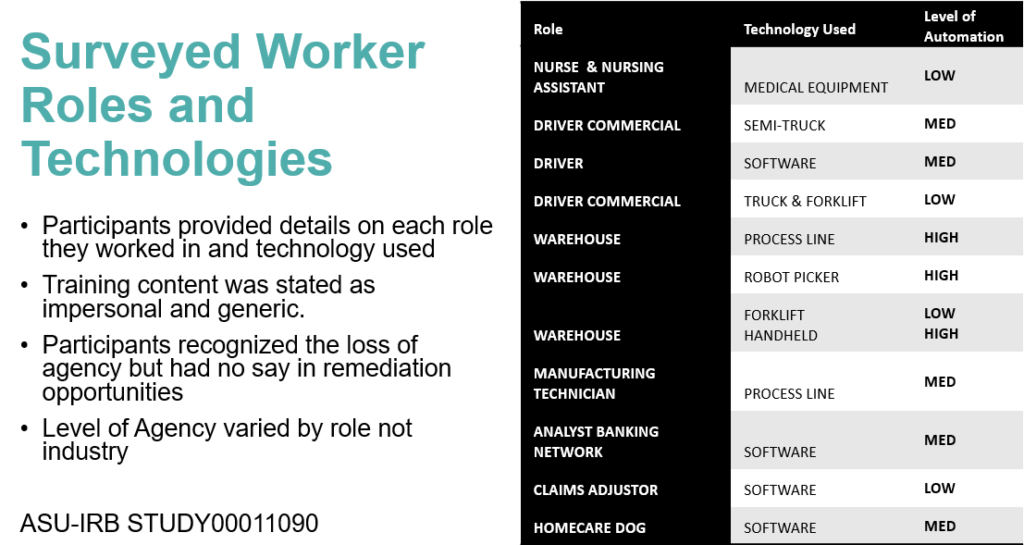
Level of Automation based on worker agency and decision control across four points
- Information Acquisition
- Information Analysis
- Decision and Action Selection
- Action Implementation
Workers prioritize working and earning their wages over reskilling themselves, the time investment does not result in job security or advancement (Vice, 2019).
Learning from automation literature and supported by this study’s participants, automation technologies making mistakes results in compounding failures until the error is addressed.
Artificial intelligent technologies are thought to be primarily for making decisions.Here, AIs supporting workers familiar with successful workforce outcomes will increase the efficiency of the technology and competitiveness worker.
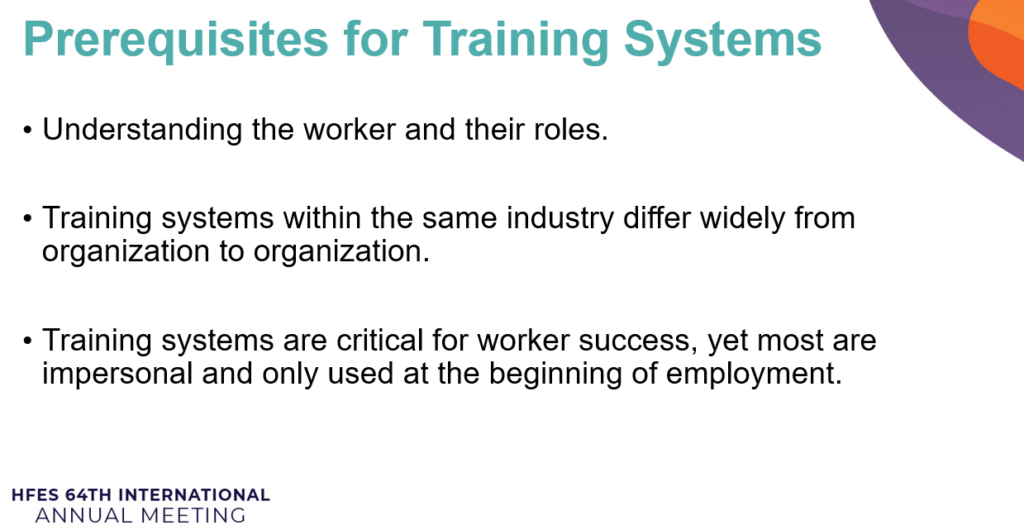

Socioeconomic factors can be linked to positive workforce outcomes within the AI training system
A major prerequisite is a change in the developer’s intent and motive.
Artificial intelligence technologies can support American workers if their developers are sensitive to worker skill levels and incentivize positive behaviors. Technology developers have the opportunity to avoid causing another around of systemic issues through focusing on the worker being successful, which in turn will allow for more positive workforce outcomes.
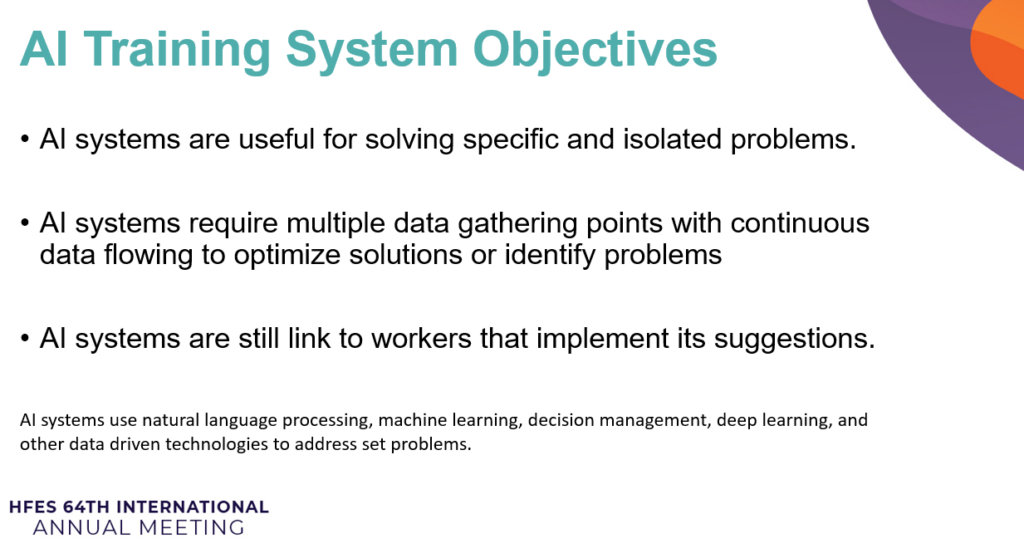
AIs have to be trained to be specific in providing suggestions and feedback during the training process.
AI systems are useful for solving specific and isolated problems. AI systems require multiple data gathering points with continuous data flowing to optimize solutions or identify problems AI systems are still link to workers that implement its suggestions
Specific areas of improvement have to be identified in the AI and the AI will have to observe instances and find improvement that fit the parameters.
While AI can understand current training systems, useful feedback to workers will require AI developers to include metrics and parameters that are executable through worker-AI interactions.
Workers should be given a robust opportunity to identify AI mistakes.

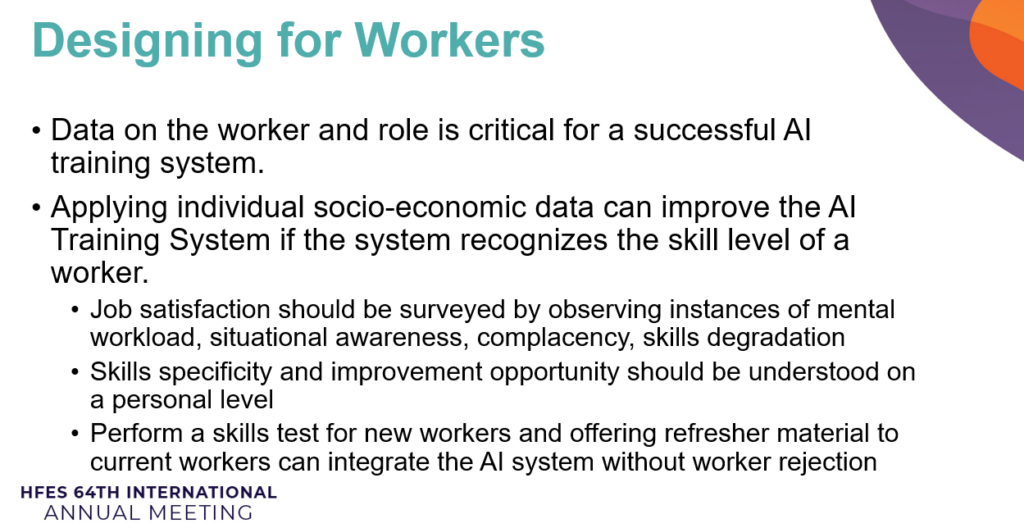
Organizations or worker advocates cannot stop technological solutions that are capable of obsoleting workers, regardless of their flaws. AI developers can provide net benefit solutions outcompeting cutthroat solutions that have disastrous effects on worker populations. There is an opportunity with new AI technologies to stave off the reduction in workers. While allowing workers and organizations to compete internationally and achieving progressive goals such as scaling market share and profitability gains.
All of which results in positive workforce and organizational outcomes.
The recommendations for AI Based training systems:
Socioeconomic factors should be tailored for individual worker roles.
Job satisfaction should be surveyed by observing instances of mental workload, situational awareness, complacency, skills degradation.
Skills specificity and improvement opportunities should be understood on a personal level, where a manager should be checking on the progress of worker improvements.
Workers should be incentivized through career advancement opportunities with increased compensation for advancing. (all of the contractor jobs could only increase earnings by spending more time working).
Developers will need to ensure the technology will function inside the work environment and provide workers an intuitive interface that advances their skills. New technologies cause workers to become uneasy and require their buy-in. Without worker buy-in, AI training technologies are bound to fail even if the interface is flawless.